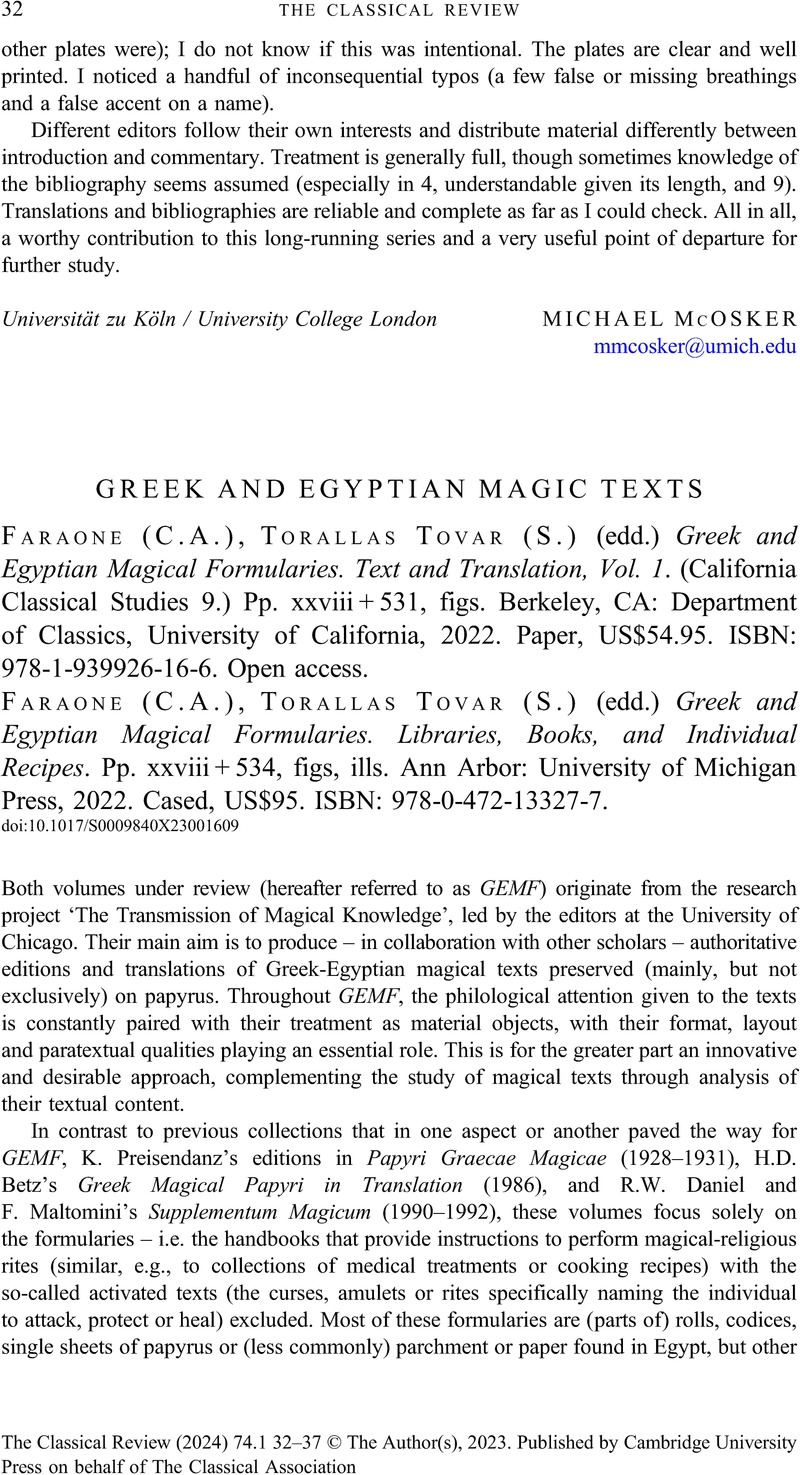No CrossRef data available.
Article contents
GREEK AND EGYPTIAN MAGIC TEXTS - (C.A.) Faraone, (S.) Torallas Tovar (edd.) Greek and Egyptian Magical Formularies. Text and Translation, Vol. 1. (California Classical Studies 9.) Pp. xxviii + 531, figs. Berkeley, CA: Department of Classics, University of California, 2022. Paper, US$54.95. ISBN: 978-1-939926-16-6. Open access. - (C.A.) Faraone, (S.) Torallas Tovar (edd.) Greek and Egyptian Magical Formularies. Libraries, Books, and Individual Recipes. Pp. xxviii + 534, figs, ills. Ann Arbor: University of Michigan Press, 2022. Cased, US$95. ISBN: 978-0-472-13327-7.
Review products
(C.A.) Faraone, (S.) Torallas Tovar (edd.) Greek and Egyptian Magical Formularies. Text and Translation, Vol. 1. (California Classical Studies 9.) Pp. xxviii + 531, figs. Berkeley, CA: Department of Classics, University of California, 2022. Paper, US$54.95. ISBN: 978-1-939926-16-6. Open access.
(C.A.) Faraone, (S.) Torallas Tovar (edd.) Greek and Egyptian Magical Formularies. Libraries, Books, and Individual Recipes. Pp. xxviii + 534, figs, ills. Ann Arbor: University of Michigan Press, 2022. Cased, US$95. ISBN: 978-0-472-13327-7.
Published online by Cambridge University Press: 05 September 2023
Abstract
An abstract is not available for this content so a preview has been provided. Please use the Get access link above for information on how to access this content.

- Type
- Reviews
- Information
- Copyright
- Copyright © The Author(s), 2023. Published by Cambridge University Press on behalf of The Classical Association



